Way back on the first day of March, Doug, who is a good birder and a decent guy despite his Brooklyn roots, and I were exploring Plum Beach, a location you will recall from the absurdly 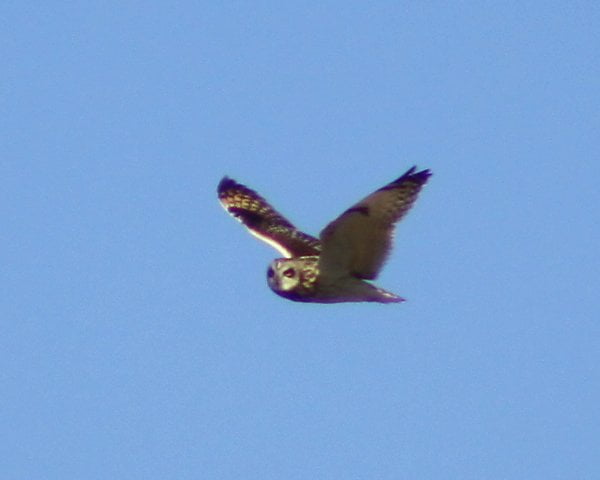 cooperative Clapper Rails and Nelson’s Sparrows that I digiscoped last year. We were walking on the south side of the marsh, hoping to find some of the Common Redpolls that had invaded the New York City area the previous week when something made me look to my left and up and I saw a Short-eared Owl in flight that had evidently just been unintentionally flushed from the opposite side of the marsh by someone out for a stroll. At first we thought the bird was just going to keep flying to the east and away from us but instead it circled back over the marsh and flew around for awhile before settling back into what we assumed was its original roost. I waited until now to post about the owl because the small size of the marsh at Plum Beach and the ease with which people can get into the marsh made it likely that if the owl’s location had been publicized it would have faced repeated disturbances from those hoping to see or photograph it.
cooperative Clapper Rails and Nelson’s Sparrows that I digiscoped last year. We were walking on the south side of the marsh, hoping to find some of the Common Redpolls that had invaded the New York City area the previous week when something made me look to my left and up and I saw a Short-eared Owl in flight that had evidently just been unintentionally flushed from the opposite side of the marsh by someone out for a stroll. At first we thought the bird was just going to keep flying to the east and away from us but instead it circled back over the marsh and flew around for awhile before settling back into what we assumed was its original roost. I waited until now to post about the owl because the small size of the marsh at Plum Beach and the ease with which people can get into the marsh made it likely that if the owl’s location had been publicized it would have faced repeated disturbances from those hoping to see or photograph it.
The Short-eared Owl has an enormous range, occurring on every continent except for Australia and Antarctica. 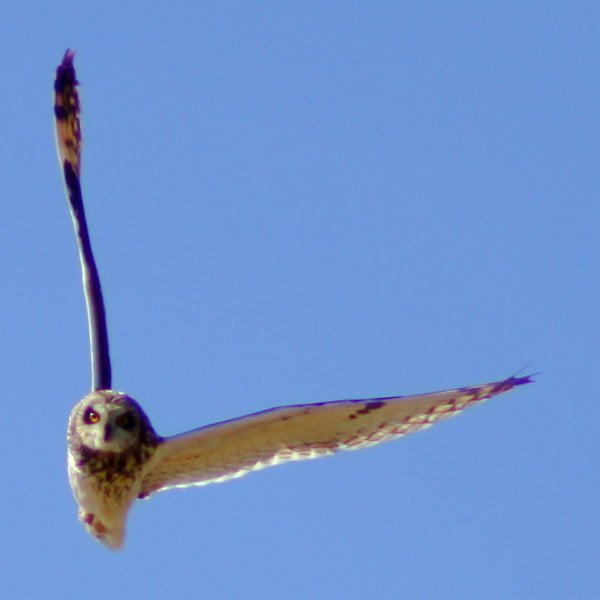 Though its population is declining everywhere that numbers are available, and seemingly precipitously in North America, it still has an extremely large population. Because of the range and population BirdLife International lists Asio flammeus as a Species of Least Concern. In New York State, however, the Short-eared Owl is considered an endangered species and it has likely been extirpated as a breeder in several of its former strongholds.
Though its population is declining everywhere that numbers are available, and seemingly precipitously in North America, it still has an extremely large population. Because of the range and population BirdLife International lists Asio flammeus as a Species of Least Concern. In New York State, however, the Short-eared Owl is considered an endangered species and it has likely been extirpated as a breeder in several of its former strongholds.
Because Short-eared Owls are most active at dawn and dusk when they hunt fields and marshes for the rodents that sustain them it is difficult to get images of them in daylight. Though Doug and I were mildly concerned that the bird had been flushed we were certainly not going to allow an opportunity to photograph a Short-eared Owl in flight in broad daylight to pass without getting some images!
Oh, and Doug also managed to digi-bin some video. How cool is that?
If you liked this post featuring Short-eared Owl images why not check out 10,000 Clicks, our collection of photo-galleries? There is something for everyone at 10,000 Clicks!
…


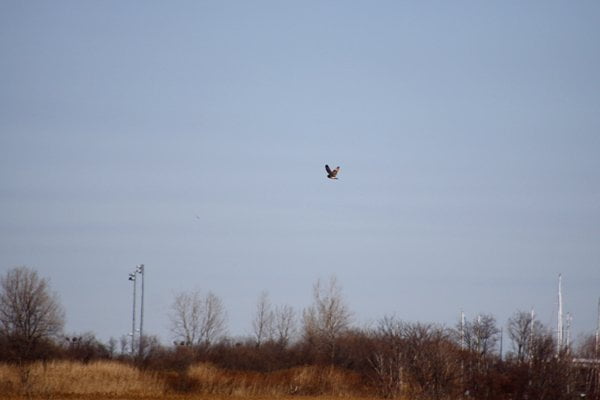
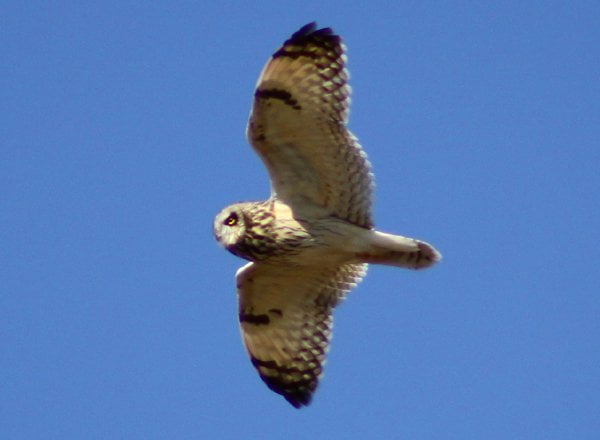
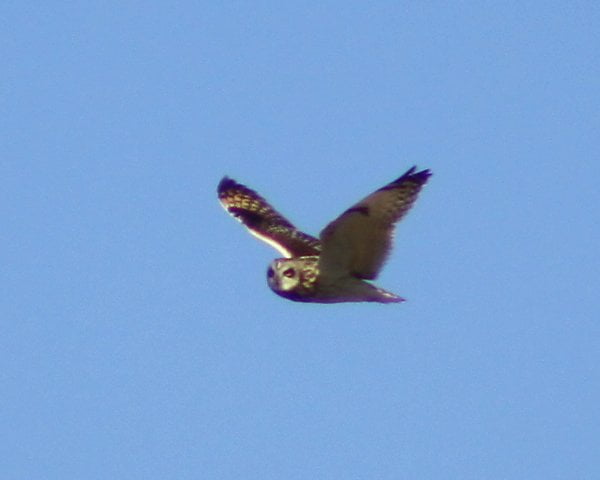
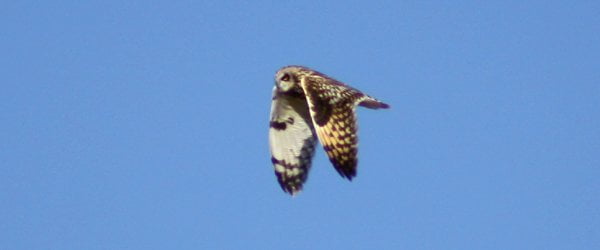
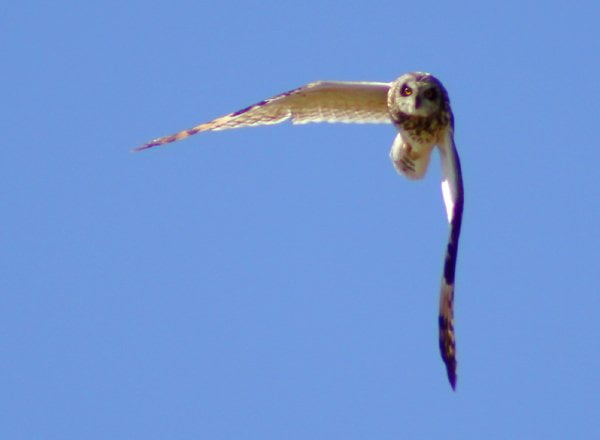
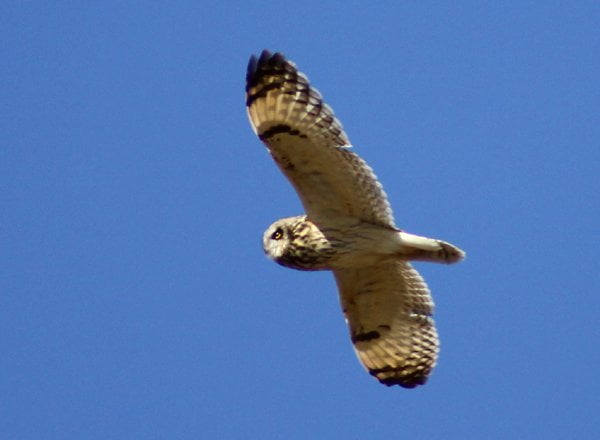
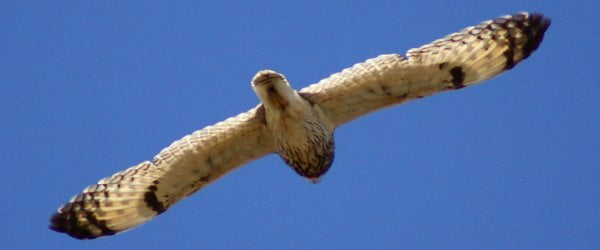
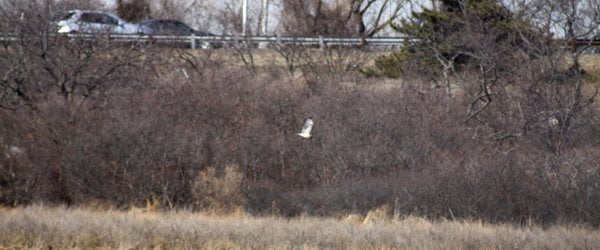











Great shots of a great find in a cool place often spoiled by unleashed dogs. Curious about the name of the place: both Plum and Plumb have their partisans. Encyclopedia of NYC plays both sides of the fence, their entry being under “Plum(b) Beach.”
Thanks!
And, yeah, the name is a source of endless conflict between those who use the b and those who don’t. I’m convinced the name lacking the b must be correct because I think the name must refer to beach plums.
Plumb Beach was named after the beach plums that grow there, but a long time ago, when plum (the kind that you eat) was spelled plumb. Look for old recipes for plumb pudding, etc.
That spelling was current in the 18th century. The implication is that beach plums have grown there since at least the 18th century or before. Changing the name to plum retains the meaning but loses the historical significance.
I might say a little more about this. I could rever you to PURITAN SAGE- Collected writings of Jonathan Edwards, Vergilius Ferm ed.
In this book Edwards refers to some plums which a little girl had taken when she went out with older children. She was distressed to hear that she was stealing, and said that she never wanted any of those plumbs, as reported by Edwards. That is the way he spelled it, plumbs. He was writing about things that happened in the 1740’s, or thereabouts.
People might remember the nursery rhyme about Little Jack Horner, who stuck in his thumb and pulled out a plum–the b on thumb has been retained for some reason, but not the b on plum. There is no accounting for the vagaries of English spelling.
@Jean: Thanks for the info on the historical spelling of plum. I will continue to be an anti-b partisan because retaining the b seems, to me, like adding an e onto town to make something feel old-timey. The spelling has changed and plum with a b means something different now…but I’m still glad you shared the info you did.
Enjoyed the post and the excellent pictures. First time i’ve seen such lovely daytime photos of an owl.